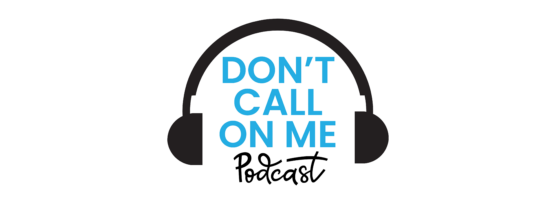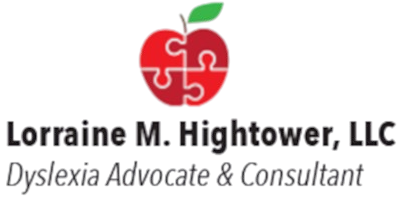
A Dyslexia Glossary For Parents
Executive Summary
A dyslexia diagnosis can feel overwhelming, but learning common terminology helps parents become informed partners in their child’s support. Understanding the difference between tutoring and therapy, key language concepts, and structured literacy approaches empowers families to make confident, effective choices.
When your child receives a dyslexia diagnosis, it can be daunting. There’s so much to learn when it comes to dyslexia. While it can be immensely helpful to seek outside help for your student, it is important that as a parent, you become a part of the solution too. Dive into the world of dyslexia in order to become a better advocate for your child’s needs and to offer understanding and support. Parents can also provide positive reinforcement and encouragement when their students are getting help with dyslexia; this can translate to more motivation and confidence for kids. It’s a good idea to know the typical terms that might come up when you’re dealing with dyslexia. Read on to discover a dyslexia glossary for parents.
Options for treatment are a great way to begin to dig into the world of dyslexia. No dyslexia glossary would be complete without a few common approaches to dyslexia treatment:
- Dyslexia tutoring: Tutoring is a form of instruction that addresses some of the learning challenges that children with dyslexia face. Dyslexia tutoring is typically done in a one-on-one or small group setting while a tutor works with students to develop writing, reading, and language skills.
- Dyslexia therapy: Therapy is a more intensive method of working with students with dyslexia. At Dyslexia on Demand, dyslexia therapy is administered by the highest level of trained dyslexia professionals: Certified Academic Language Therapists (CALTs). CALTs personally guide students through specially designed dyslexia curriculum either one-on-one or in small groups. Rather than just addressing superficial symptoms, dyslexia therapy helps develop new neural pathways so that your child can overcome the learning difference.
Getting a better understanding of how language is learned can enrich parents’ understanding of how dyslexia is treated. Following are some dyslexia glossary terms that deal specifically with language:
- Multisensory structured language instruction: As the name implies, multisensory structured language instruction involves your student’s senses like sight, sound, movement, and touch. When a multisensory approach is used—as it is in dyslexia therapy—it can assist readers in connecting physically, visually, and audibly to the words they are learning. Dyslexia therapists integrate visual, auditory, and motor processing alongside the structure of the English language. A multisensory approach helps to create a solid foundation in students for language skills.
- Explicit instruction: This includes clear, direct, systematic instruction for reading and writing skills.
- Systematic instruction: As a part of explicit instruction, systematic instruction follows a specific sequence that helps to build upon a student’s prior knowledge.
- Phonological awareness: Developing phonological awareness can help students with dyslexia to develop a strong understanding of the sounds in words.
- Phonemic awareness: Phonemic awareness focuses on a student’s ability to concentrate on and to manipulate individual sounds—phonemes—in spoken words.
- Phonemes: These are the smallest units that make up spoken language; they combine to form syllables and words.
- Fluency: When students work on fluency, they’re learning to improve their skills for reading aloud. Fluency tends to focus on speed, accuracy and appropriate expression.
- Decoding: For readers, decoding is the ability to break words down into the sounds that blend them together.
- Comprehension: Another goal for struggling readers is to better understand the meaning of the material they read, known as comprehension.
As a parent of a student with dyslexia, it will be important to know some of the dyslexia glossary terms that connect to your child’s classroom:
- Accommodations and interventions: For students with dyslexia, accommodations and interventions are changes or adjustments made in order to assist them with their education and reading skills. Some accommodations might include extra time, assistive technology, or preferential seating.
Dyslexia therapy is a great path to follow for students with dyslexia. Learn more dyslexia glossary terms that focus on dyslexia therapy. There are other therapy programs out there, but here are a few of the frequently utilized programs that have great marks of success:
- Orton-Gillingham: To get a better understanding of the Orton-Gillingham approach to dyslexia is to really get into the origins of dyslexia therapy. Dr. Samuel Orton was a neuropsychiatrist and pathologist and Anna Gillingham was an educator and psychologist. They worked together to develop this approach back in the 1930s. Their groundbreaking method combines direct, multi-sensory teaching strategies that work with systematic, sequential lessons and a focus on phonics. OG is an umbrella term for a multisensory approach to structured literacy but does not indicate a specific program.
- Take Flight: This comprehensive intervention for students with dyslexia includes a 2-year curriculum that was created by the staff of the Luke Waites Center for Dyslexia and Learning Disorders at the Texas Scottish Rite Hospital for Children (TSRHC). This program is designed to be implemented by a CALT; it’s recommended for children 7 and older. Take Flight was developed to enable students with dyslexia to achieve and maintain better word recognition, fluency, and comprehension. It also focuses on students transitioning well from a therapy setting to a real-world setting.
- Basic Language Skills Therapy (BLS): This dyslexia intervention program includes literary instruction for students that is systematic and intensive. Its framework is sequential and comprehensive. BLS provides dyslexic students with instruction in phonemic awareness, letter recognition, decoding, spelling, fluency, comprehension, handwriting, vocabulary, and oral-written expression.
Are you ready to learn more about dyslexia therapy? Dyslexia on Demand offers more than a dyslexia glossary. Experts and leaders in the world of dyslexia help to conduct dyslexia therapy sessions and help families find a path to success. Find out more about Dyslexia on Demand’s programs.
FAQs
1. What is the difference between dyslexia tutoring and dyslexia therapy?
Tutoring typically provides extra practice with reading or homework support, while dyslexia therapy is a therapeutic, research-based intervention delivered by Certified Academic Language Therapists. Therapy focuses on building new neural pathways to improve decoding, fluency, comprehension, and overall reading confidence.
2. Why is multisensory instruction important for dyslexic learners?
Multisensory instruction engages sight, sound, and movement together, helping the brain reinforce language concepts more strongly. This approach supports long-term retention and makes reading skills easier to apply in real situations.
3. What makes Take Flight or other Orton-Gillingham based programs effective?
These programs are structured, sequential, and data-driven, meaning skills build thoughtfully and systematically over time. They are designed specifically for dyslexic learners and are most effective when implemented by highly trained specialists such as CALTs.
References
Academic Language Therapy Association. (n.d.). What is a Certified Academic Language Therapist (CALT)? https://www.altaread.org/
International Dyslexia Association. (2017). Definition of dyslexia. International Dyslexia Association. https://dyslexiaida.org/definition-of-dyslexia/
International Dyslexia Association. (2019). Structured literacy: Effective instruction for students with dyslexia and related reading difficulties. https://dyslexiaida.org/structured-literacy-effective-instruction-for-students-with-dyslexia-and-related-reading-difficulties/
International Dyslexia Association. (2017). Effective reading instruction for students with dyslexia. https://dyslexiaida.org/effective-reading-instruction-for-students-with-dyslexia/
Birsh, J. R., & Carreker, S. (Eds.). (2018). Multisensory teaching of basic language skills (4th ed.). Paul H. Brookes Publishing.
Scottish Rite for Children. (2020). Take Flight: A comprehensive intervention for students with dyslexia. https://scottishriteforchildren.org/take-flight-a-comprehensive-intervention-for-students-with-dyslexia/
Neuhaus Education Center. (n.d.). Basic Language Skills. https://www.neuhaus.org/
Henry, M. K. (2010). Unlocking literacy: Effective decoding and spelling instruction (2nd ed.). Brookes.
Shaywitz, S. E., & Shaywitz, B. A. (2020). Overcoming dyslexia: Second edition. Vintage.












